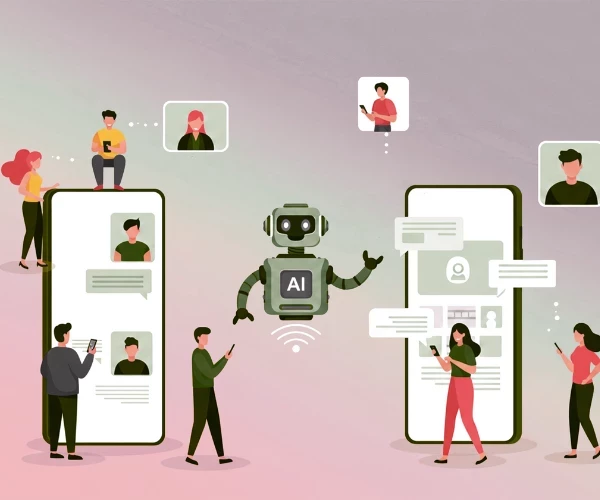Learning Format Types and When to Use Them
Add bookmark
This article originally appeared on LinkedIn's Learning Blog and can be viewed here.
The more workplaces have to grow, adapt, and change, the more integral learning and development roles become.
The ever-escalating digital transformation of the workplace was already saddling L&D teams with more responsibility than ever throughout the 2010s. Then COVID-19 happened, and suddenly, everyone had to grow, adapt and change immediately.
The pandemic’s impact on L&D is clear: In our own survey of L&D professionals, 64% agreed that L&D functions became strategically critical to their organization in 2021. Meanwhile, CIPD’s 2021 Learning and Skills at Work Survey found that almost half of surveyed organizations dedicated significant resources toward digital learning last year.
Yet, being popular has its downsides. In 2022, L&D pros face quite a challenge: not only do they have to close skill gaps and future-proof their organizations more efficiently than ever, but they also have to do so while offering more engaging training and instructional material than ever… and, for the most part, they have to do it all digitally! How could L&D pros possibly accomplish all of that at once?
Something For Everyone
Well, over the course of the pandemic, many L&D pros did exactly that, and the way they pulled it off may surprise you:
According to McKinsey’s latest report on skill-building, employees learn better when they learn in a wide variety of different ways. Companies that use fewer than four learning formats cite a 50% success rate, while companies that use eight or more report a 70% success rate.
Today, the learner experience needs to be personalized, interactive, and social to keep employees interested in learning, said Linda Jingfang Cai, vice president of talent development at LinkedIn. And to truly drive learner engagement and success, learning needs to be accessible and inclusive.
Rather than investing their budgets in all video or all live training, L&D pros experienced the most success when they mixed and matched multiple formats to meet the needs of their employees.
The conclusion to draw here is pretty clear. If you want your employees to retain learning, you have to supply it in as many forms as possible. Let’s talk about how to do that:
Mixing it up in 2022: 3 Learning Format Types
Learning format types fall into three main categories: Instructor-Led Training (ILT), Virtual Live Training (VLT) and Blended Learning. Each is useful for different programs and learners.
Instructor-Led Training (ILT)
What it is: During Instructor-Led Training, learners attend a class where an instructor guides them through a lesson plan. In today’s professional environment, ILT courses are increasingly available digitally. For example, most LinkedIn Learning courses are considered ILT.
What it’s good for:
- Self-directed learning: Learners can pause and return to ILT courses as needed and learn at their own pace.
- Standardized learning: ILT is ideal for skills that can be standardized, measured and tested.
What it isn’t good for:
- Immediate feedback: Skills that require considerable moment-to-moment guidance or course correction during practice are better suited to live learning environments.
- Interactive learning: Similarly, while ILT allows for asynchronous team-based learning, it is less effective at facilitating learning based on live, in-person interactions, such as practice teams.
What to use it for:
- Learning in the flow of work: ILT is ideal for skills that can be gained in the flow of work, whenever learners are able to take time for learning.
- Interpersonal skills: ILT works best when the subject matter is relatively broad and highly engaging, making it a great fit for interpersonal or leadership training.
Virtual Live Training (VLT)
What it is: Virtual Live Training recreates the actual classroom experience remotely, by featuring instructors who walk through the subject matter via a live video conference call.
What it’s good for:
- Critical company updates: VLT is a great way to make sure everyone understands a company-wide change immediately.
- Highly technical subject matter: When it comes to skills that require minute-to-minute feedback, VLT walkthroughs are especially beneficial.
What it isn’t good for:
- Multi-stage (long) material: The longer the VLT session, the lower the retention rate. Nobody wants to listen to someone explain something for four hours, especially without a break.
- Large groups: VLT is most effective when learners can ask questions and get personalized assistance in real-time. That simply isn’t possible in large groups.
What to use it for:
- Brief, mandatory training: If you need to communicate something crucially important quickly, VLT is the best tool for the job.
- Introducing new tools to small teams: VLT is ideal for helping small groups grasp complicated new skills, because it allows them to ask questions and interact as they learn.
Blended Learning
What it is: Blended Learning combines aspects of ILT and VLT, usually by offering a combination of pre-recorded, teacher-led video walkthroughs and live Q&A or training sessions.
What it’s good for:
- Learning “check-ins”: During live sessions, learners have the opportunity to ask instructors about anything they may not have understood during video segments.
- Multi-stage learning: Many skills have different elements that are best suited for either ILT or VLT. Blended allows you to use the most effective methodology for each individual lesson.
What it isn’t good for:
- Scheduled or urgent learning: Blended learning tends to require more logistical management than other methods, which may make it difficult to coordinate over longer periods of time.
- Drill-based learning: If the skill you’re teaching should be reinforced via repeated, consistent reapplication, it may be challenging to apply a blended approach.
What to use it for:
- Large groups: Despite logistical difficulties, blended learning is the best approach to teaching a large group of learners a skill over a longer period of time, because you can break the group into smaller teams for scheduled live sessions.
- Checkpointing: Pre-scheduled live sessions offer instructors an opportunity to ensure each of their learners understands the non-live lesson plans they have taken up to this point.
Learning to Put it all Together
L&D isn’t going anywhere in 2022. In fact, it stands to become more impactful than ever, as 66% of L&D pros agree they are increasingly being tasked with reshaping their organizations this year.
In the face of this hefty responsibility, your success as an L&D pro will be determined not only by what they teach but also by how they teach it.
Keep your learning formats flexible to ensure your entire workforce is seeing the full benefit of your L&D program.





















